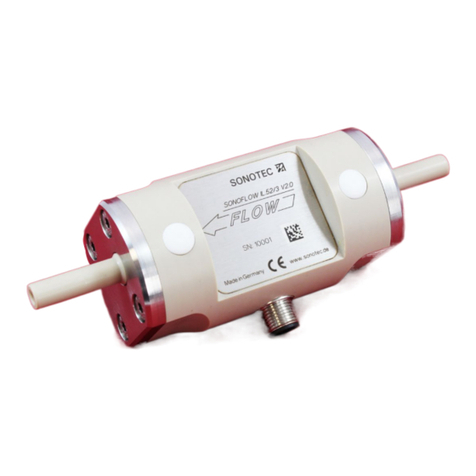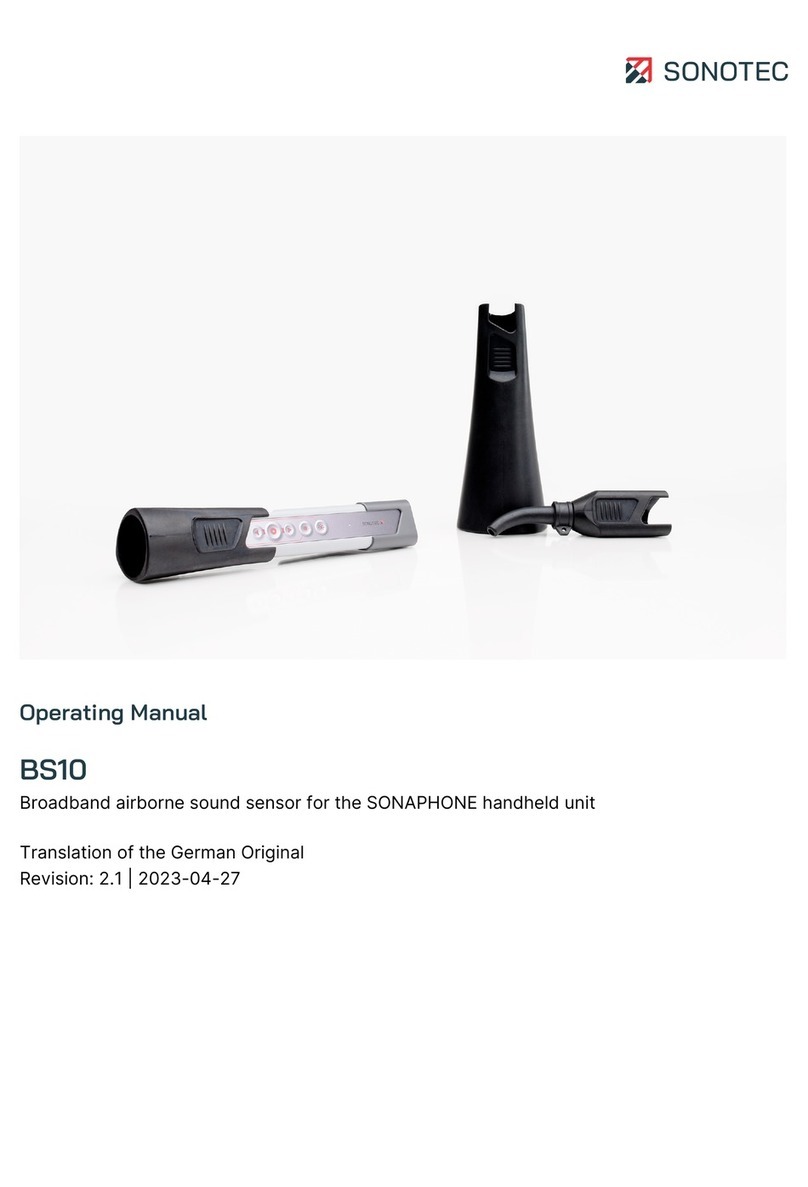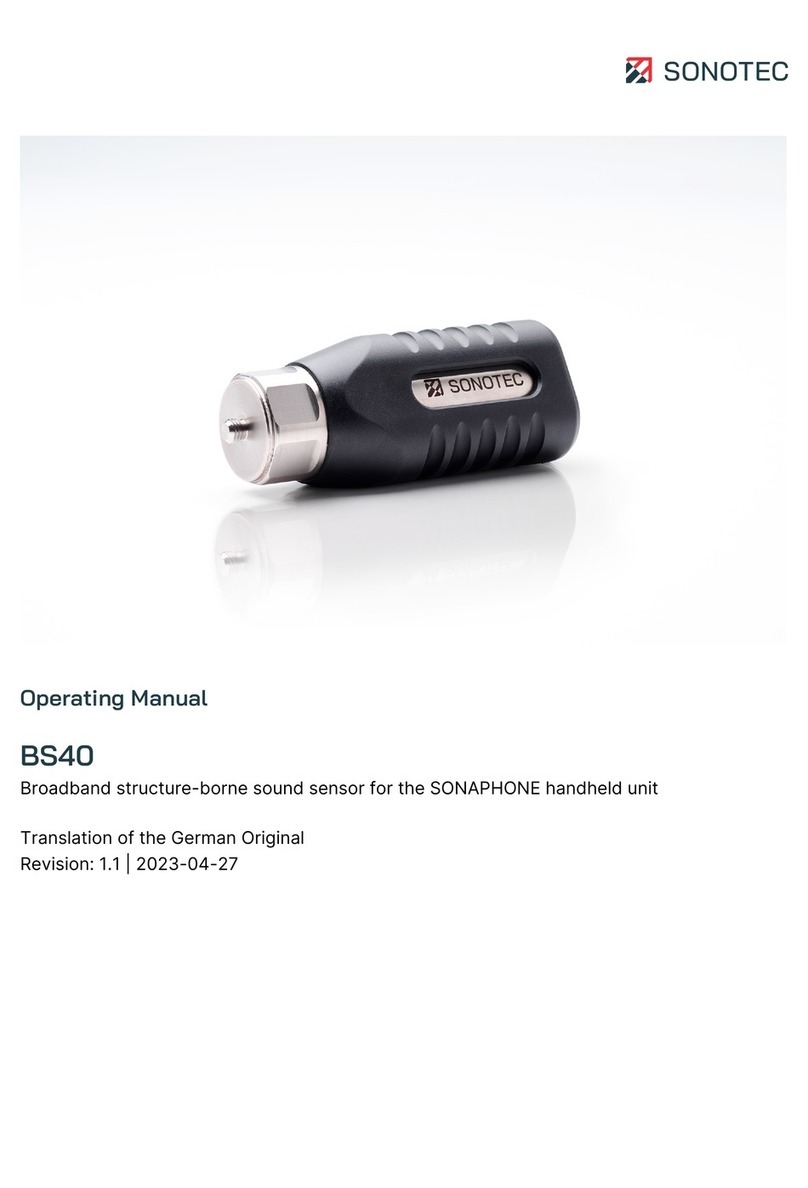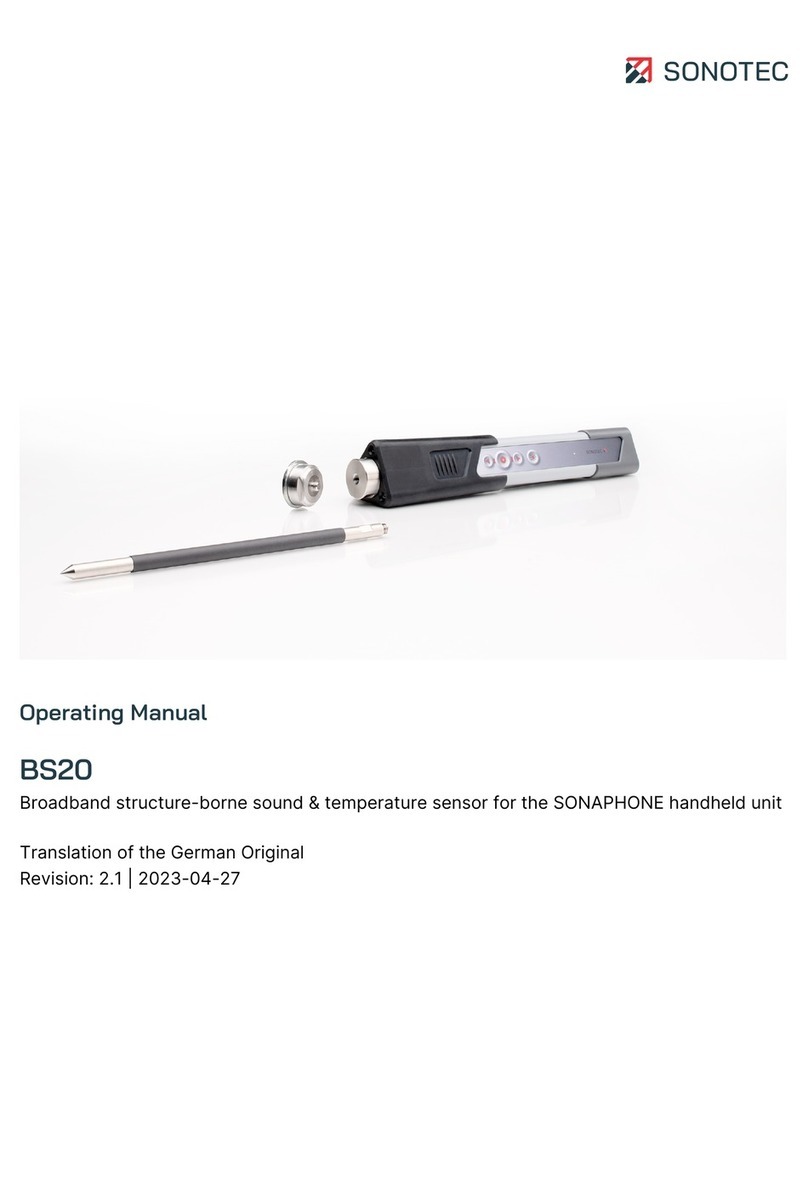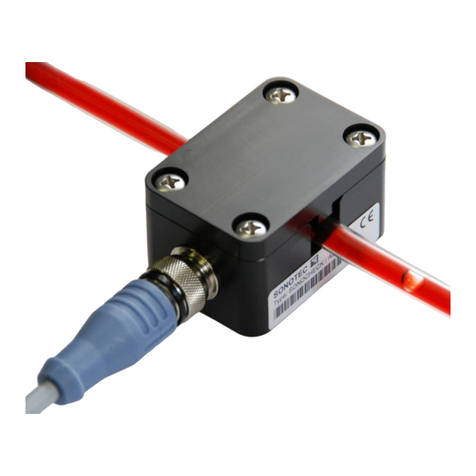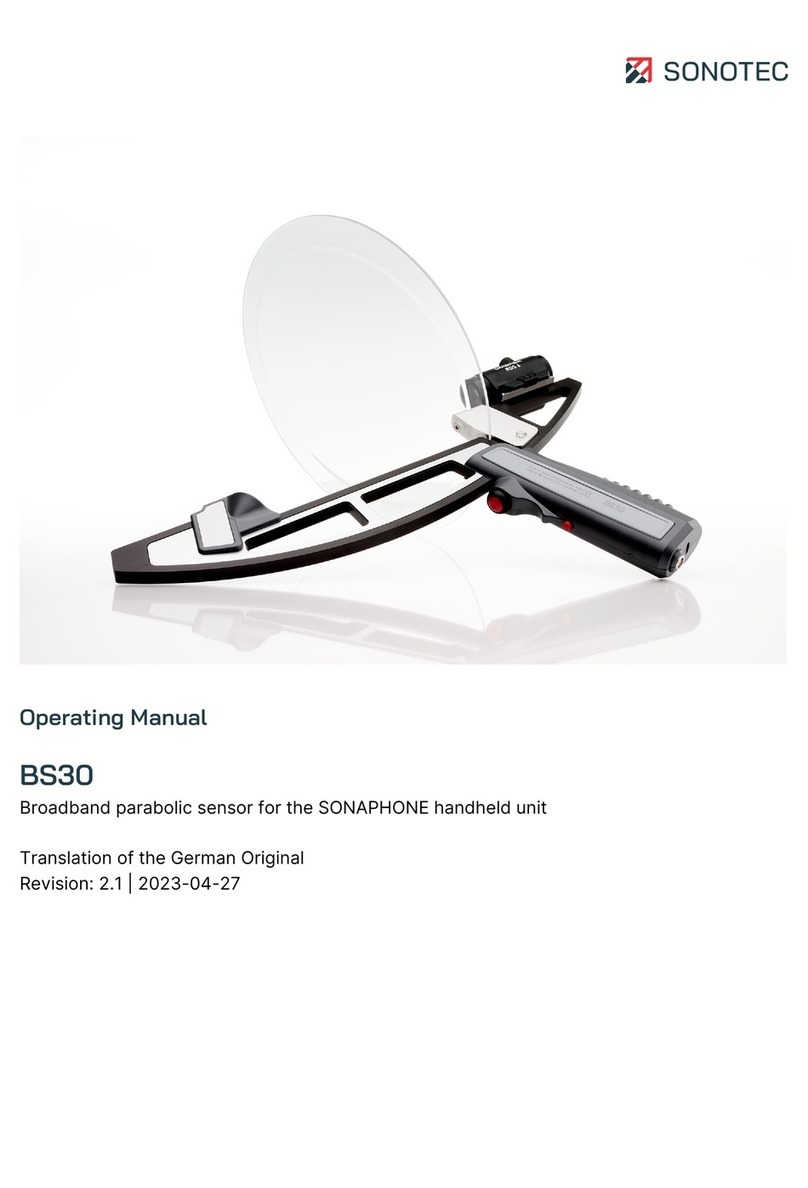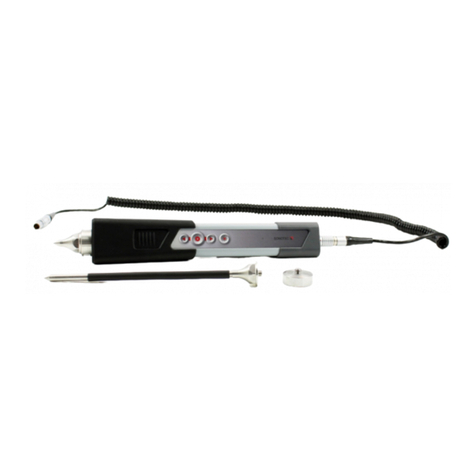
Parabolic Sensor BS30
3 / 16
Revision: 1.4 | 2020-09-14
Content
1Information on this document.............................................................................................................. 5
1.1 General...........................................................................................................................................5
1.2 Symbols used.................................................................................................................................6
2Sensor description ................................................................................................................................ 7
2.1 Applications and designated use ...................................................................................................7
2.2 Functioning.....................................................................................................................................7
2.3 Sensor elements ............................................................................................................................8
2.4 Sensor connections........................................................................................................................9
2.5 Device identification/type label.....................................................................................................10
3Operation of the parabolic sensor..................................................................................................... 11
3.1 Assembling and disassembling the parabolic reflector ................................................................11
3.2 Connecting the sensor to SONAPHONE .....................................................................................12
3.3 Using the laser and the red/green dot sight .................................................................................12
3.4 Operation via the buttons on the sensor ......................................................................................13
3.5 Cleaning and maintenance ..........................................................................................................13
4Disposal................................................................................................................................................ 14
5Warranty ............................................................................................................................................... 15
